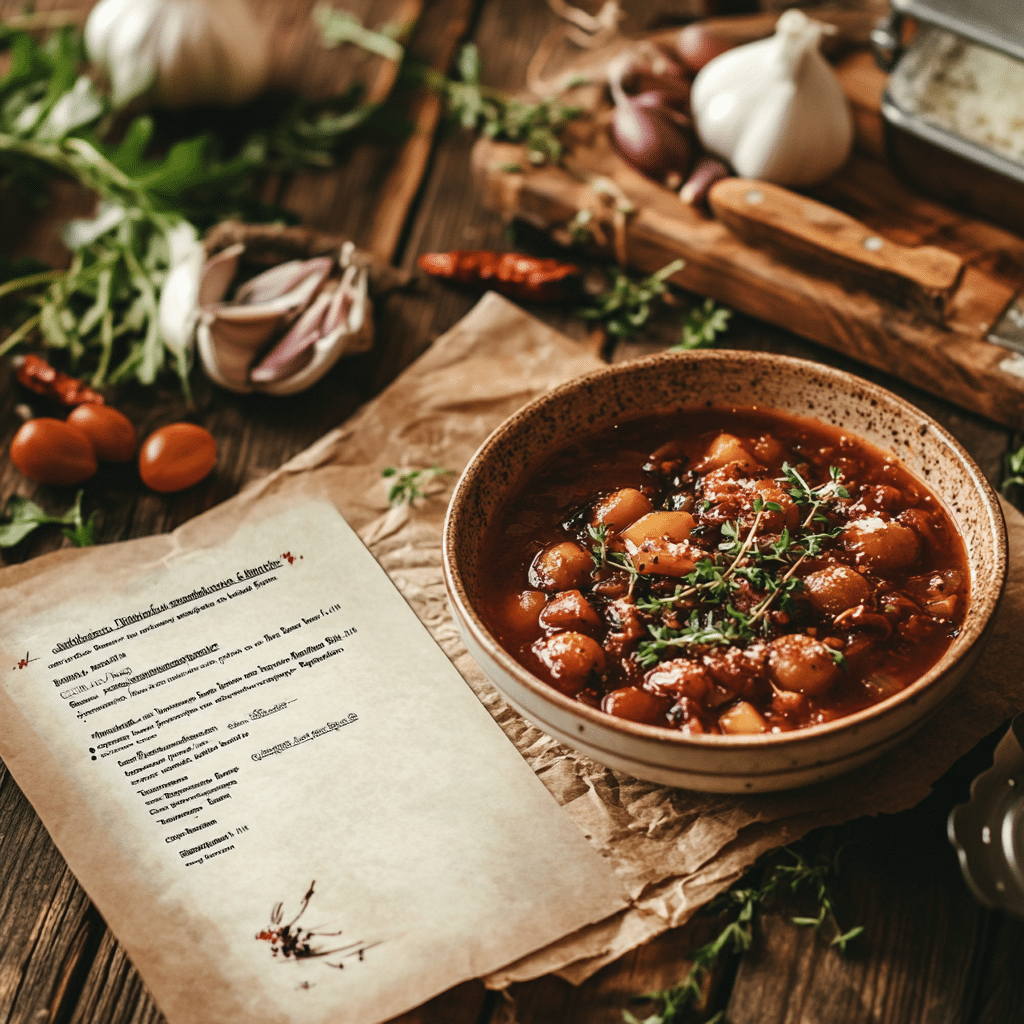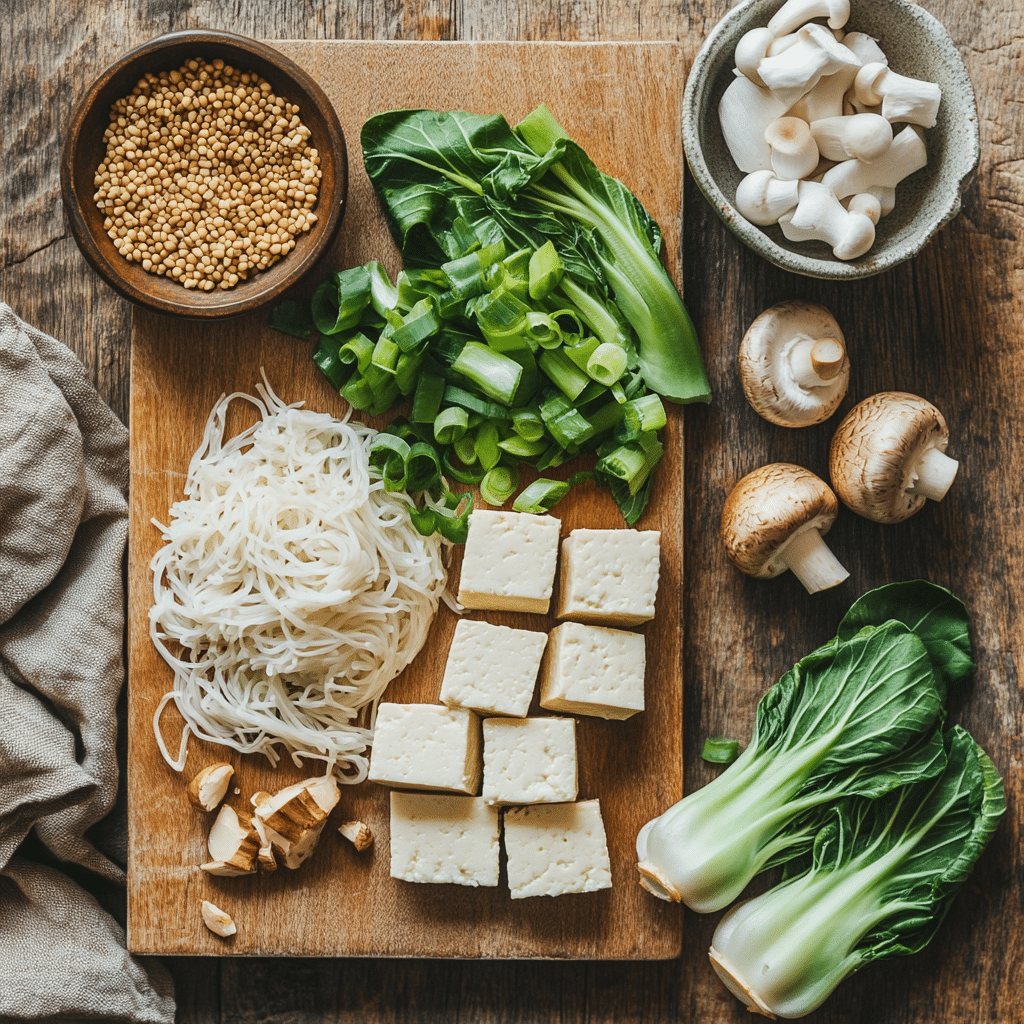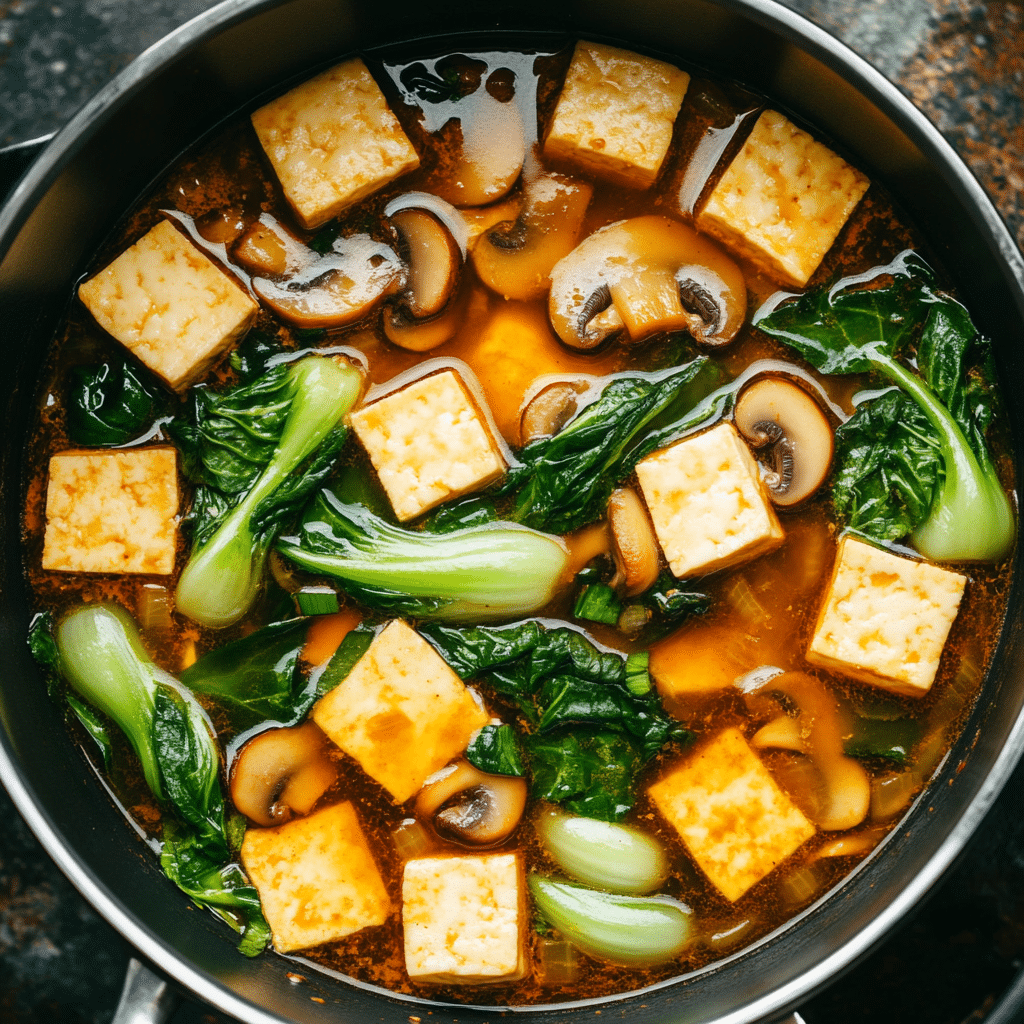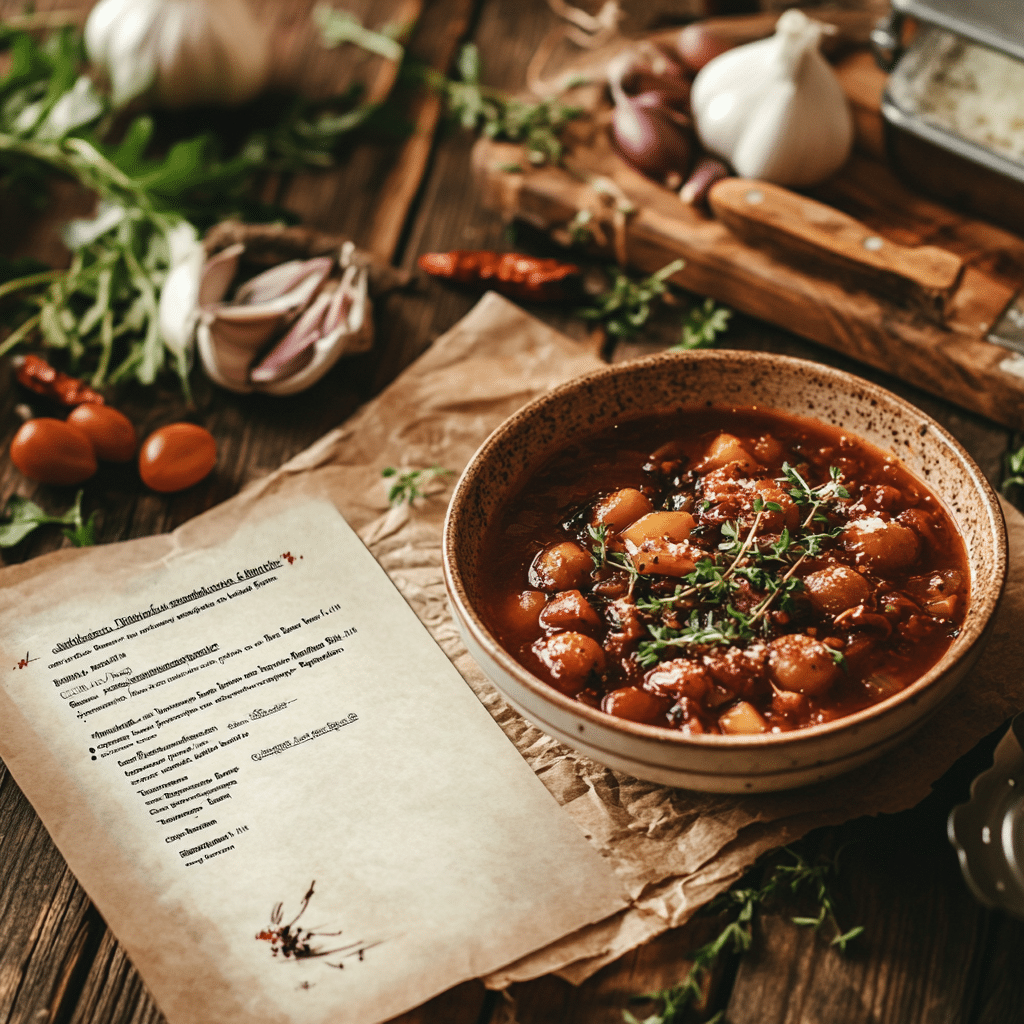Japanese Mounjaro recipe lovers—this one’s for you. If you’re using Mounjaro to manage weight or improve blood sugar, what you eat matters more than ever. This flavorful Japanese-inspired dish is designed to align with your goals while giving your taste buds something to celebrate. Packed with umami, fiber, and protein, it’s clean, comforting, and incredibly satisfying. We’ll explore its backstory, health-focused ingredients, and step-by-step cooking method. Whether you’re new to healthy eating or a seasoned Mounjaro user, this recipe is a game-changer. Ready to turn your meal into a mindful, metabolic-supporting ritual? Let’s get started.
You’ll also get a bonus Japanese Mounjaro detox drink to pair for faster results.
What You’ll Find Here

Japanese Mounjaro Recipe free – A Delicious Way to Stay on Track
Ingredients
Method
- 1. Rinse konjac noodles and boil for 2-3 minutes, then drain and set aside.
- 2. Heat sesame oil and sauté garlic and ginger for 2 minutes.
- 3. Add broth and miso paste. Whisk until dissolved.
- 4. Add tofu or salmon to broth and simmer for flavor.
- 5. Toss in bok choy, mushrooms, scallions. Simmer 5 minutes.
- 6. Return noodles to the pot and mix gently.
- 7. Taste, adjust seasoning, and serve with toppings.
Nutrition
Notes
Tried this recipe?
Let us know how it was!Why This Japanese Mounjaro Recipe Is More Than Just a Meal
The story that started it all
The idea for this Mounjaro Japanese recipe was born in my grandmother’s tiny kitchen in Kyoto. She’d stir miso into broth with a worn wooden spoon while fish sizzled on a cast iron skillet. The air was always filled with the aroma of sesame oil, ginger, and garlic—soothing, bold, and unforgettable. Years later, after I began my own wellness journey and started using Mounjaro, I craved that same comfort, but with updated ingredients that support modern health goals.
That’s where this dish comes in. It takes everything I loved—deep flavor, warmth, satisfaction—and rebuilds it for the clean, intentional eater. I wanted something that felt nostalgic but wouldn’t spike blood sugar or derail progress. So I reached for konjac noodles instead of white rice, miso for gut-friendly umami, tofu or salmon for protein, and vibrant greens for nutrients. The result? A light, therapeutic bowl that keeps you grounded and focused.
Why this Japanese Mounjaro recipe works
This recipe isn’t just delicious—it’s functional. It supports stable energy, curbs hunger, and helps regulate blood sugar thanks to its balance of fiber, protein, and fermented ingredients. It’s perfect for anyone on Mounjaro or looking to stay in ketosis longer. And it’s flexible enough for batch cooking or elegant weeknight dinners.
If you’ve already loved our lemon balm weight loss tea, you’ll feel right at home with this recipe. It’s another tool in your feel-good, look-great kitchen kit.
Up next, we’ll break down each ingredient and show you how every choice supports your health and helps Mounjaro work even better.
The Nutrient-Packed Ingredients Behind This Japanese Mounjaro Recipe
Why These Ingredients Work for Mounjaro Users

The brilliance of this Japanese Mounjaro recipe lies in how thoughtfully the ingredients are chosen. Each one is selected to help stabilize blood sugar, support digestion, and leave you feeling full—not heavy. If you’ve been using Mounjaro for weight management or type 2 diabetes, this recipe can complement its effects beautifully.
Start with konjac noodles (also called shirataki). These gelatinous, nearly zero-calorie noodles are high in glucomannan, a prebiotic fiber that slows digestion and reduces hunger. They mimic the texture of ramen or udon without the starch spike.
Next, fermented miso paste brings that classic umami flavor while offering probiotics. A tablespoon goes a long way to deepen the broth and aid gut health. Choose white or yellow miso for a mild, sweet-savory flavor.
Tofu or wild-caught salmon provides clean protein—essential when using Mounjaro, which often suppresses appetite. Maintaining muscle while losing fat is key, and this lean protein helps. Tofu also absorbs broth flavors beautifully.
Don’t skip the bok choy, shiitake mushrooms, or scallions. These fiber-rich vegetables add crunch, antioxidants, and gut-friendly compounds. The low carb content supports ketosis, making this a solid choice even for those on high-fat, low-carb plans.
Flavorful boosters like fresh ginger, garlic, a splash of coconut aminos, and a few drops of toasted sesame oil elevate everything while keeping the sodium in check.
Japanese Mounjaro recipe fans will appreciate how easily this meal fits into their day. It’s satisfying enough for dinner, light enough for lunch, and reheats well for meal prep.
For a hydrating matcha-pairing idea, try it with our matcha cream cold foam.
Coming next: How to cook this recipe step-by-step—plus tips to customize it for your exact goals.
Science-Backed Ingredients
Every ingredient in this Japanese Mounjaro-inspired recipe was chosen with intention—not just for its bold, comforting flavor, but for how it fuels your body with nutrients that support stable energy, digestion, and metabolic balance. I believe diet food should empower, not deprive. That’s why every layer of this bowl brings both taste and function to your plate.
Shirataki Noodles
Shirataki noodles are rich in glucomannan, a soluble fiber shown to support weight loss and blood sugar regulation. Explore shirataki noodle health benefits on Medical News Today.
Miso Paste
Miso brings umami depth while packing probiotics that nourish your gut microbiome and enhance immune health. Learn more about miso’s gut-supportive properties on WebMD.
With each bite, you’re not just enjoying a cozy meal—you’re honoring your wellness journey, one delicious choice at a time.
Step-by-Step – How to Make This Japanese Mounjaro Recipe Shine
Simple steps for bold results
Making this Japanese Mounjaro recipe is easier than you think. You’ll go from basic pantry items to a gourmet-style meal in under 30 minutes. It’s light, nourishing, and highly customizable—exactly what clean eating should feel like.
Step 1: Prep your noodles
Start with one package (7–8 oz) of konjac noodles. Rinse them well under cold water and boil for 2–3 minutes to remove the natural odor. Drain and set aside. These noodles are key to keeping carbs low while adding satisfying texture.
Step 2: Build your broth
In a medium saucepan, heat 1 teaspoon of sesame oil over medium heat. Add 1 clove of minced garlic and a 1-inch piece of grated fresh ginger. Sauté for 1–2 minutes until aromatic. Add 2 cups of low-sodium vegetable or bone broth. Once warm, whisk in 1 tablespoon of white miso paste until fully dissolved.

Step 3: Add your protein
If using tofu, cube and pan-sear it for 3–4 minutes until golden. If you prefer salmon, lightly season and pan-sear until cooked through. Add to the broth to infuse flavor.
Step 4: Load the vegetables
Add sliced bok choy, shiitake mushrooms, and scallions. Let them simmer for 5 minutes, just until tender-crisp. Return the noodles to the pot and stir gently to combine.
Step 5: Finish and serve
Taste and adjust seasoning with a splash of coconut aminos or sea salt. Ladle into bowls and top with sesame seeds, nori strips, or a drizzle of chili oil if desired.
Customizing Your Japanese Mounjaro Recipe for Results That Last
Make it yours: flexible swaps & upgrades
The beauty of this Japanese Mounjaro recipe is how easy it is to personalize without compromising your goals. Whether you’re keto, plant-based, or just looking for food that works with your lifestyle, a few small tweaks can make this your go-to dish for weeks.
Want more protein? Swap tofu for soft-boiled eggs or grilled shrimp. Craving something heartier? Add cauliflower rice or extra mushrooms for bulk without the carbs. If your macros allow, a few edamame beans or roasted sweet potato slices can round out the meal with a touch of sweetness.
Sensitive to soy? Replace miso with a coconut-based aminos blend and use tempeh or lentils for your protein base. You’ll still get that umami hit with zero compromise.
And if you want to save time, prep the broth base in advance and store it in mason jars. Just reheat, add fresh veggies and protein, and serve. Easy, nourishing, and tailored to you.

Pair it wisely for even better results
To fully support your metabolism, pair this meal with a hydrating, functional drink like our lemon balm ozempic recipe if you’re eating earlier in the day.
Also, consider your portion timing. Many Mounjaro users find that eating a high-fiber, low-carb meal for lunch helps smooth energy dips and supports better appetite control in the evening.
No matter how you serve it, this Japanese Mounjaro recipe free offers comfort, control, and creativity on your plate. It’s more than a meal—it’s a mindset shift.
Bonus: Japanese Mounjaro Detox Drink
Before diving into your bowl, prime your metabolism with this quick, warm detox drink made from staple Japanese ingredients. It’s designed to work in harmony with Mounjaro, giving your digestive system a clean, comforting boost while helping curb appetite naturally.
This Japanese Mounjaro detox drink is inspired by traditional medicinal sips often consumed before meals in Okinawan and Zen cuisines—proven to support longevity and digestion. In under 3 minutes, you’ll have a warm, functional drink that gently awakens your gut and metabolism.
Ingredients:
- 1 tbsp fresh lemon juice
- 1 tsp grated ginger
- 1 tsp low-sodium white miso paste
- 1 cup warm water
Instructions:
Mix all ingredients in warm (not boiling) water. Stir until miso dissolves fully. Drink slowly, preferably 30 minutes before your main meal. For extra fire, add a pinch of cayenne or black pepper.
Chilled version: After mixing, refrigerate for 30 minutes. Serve over ice with a cucumber slice for a cool detox sip.
Add to Your Routine for Lasting Results
Drink this before your Japanese Mounjaro recipe bowl for better hunger control and improved digestion. Many report feeling full longer, reducing late-night cravings, and feeling “cleaner” after consistent use for 7 days.
To create a full day of Mounjaro-friendly eating, follow with our mango matcha chia pudding for dessert or breakfast prep.
Comparison Table: Brazilian Mounjaro Drink vs. Our Japanese Mounjaro Detox Drink
| Brazilian Mounjaro Drink | Japanese Mounjaro Detox Drink |
|---|---|
| Apple cider vinegar, lemon, honey | Miso, ginger, lemon + balanced miso bowl |
| Quick fix, acidic base | Gentle detox + complete nourishment |
| One-dimensional effect | Full meal synergy for satiety & results |
Japanese Mounjaro Tea Ritual (Matcha & Kombu Variation)
While our detox drink gets your system going, this Japanese Mounjaro tea variation is rooted in centuries-old healing practices. It’s a grounding, warming sip made with ceremonial-grade matcha, kombu (kelp), and fresh ginger, ideal for those who prefer liquid nutrition in the morning or between meals.
Ingredients:
- 1 tsp ceremonial-grade matcha
- ½ tsp finely chopped kombu or kelp powder
- ½ tsp fresh grated ginger
- Pinch of lemon zest or yuzu peel (optional)
- 1 cup warm (not boiling) water
- Optional: 1 tsp raw honey
How to Make:
Sift the matcha into a small bowl. Add ginger, kelp, and zest. Slowly pour in warm water (around 175°F), whisking gently in a zigzag motion until smooth. Sweeten to taste. Sip slowly as a mindful wellness ritual.
This pairs beautifully with our lemon balm tea as a relaxing afternoon alternative.
Japanese Mounjaro Recipe Usages
When Should You Eat This Japanese Mounjaro Meal?
Timing can amplify the effects of your Mounjaro-friendly meals. This Japanese bowl works best:
- At lunch, when your metabolism is active and your body can benefit from protein + fiber to stay full through the afternoon.
- Post-detox drink, about 30 minutes later, to ease digestion and extend satiety.
- After workouts, to restore nutrients without spiking blood sugar.
Avoid pairing with high-carb sides. Instead, follow it up with something light, like our mango matcha chia pudding, for balanced energy.
Who Is This Japanese Mounjaro Recipe For?
This recipe is crafted specifically for:
- People using Mounjaro who need high-satiety meals that don’t disrupt blood sugar
- Anyone seeking a low-carb, high-flavor meal rooted in tradition but tailored for modern health
- Individuals with sensitive digestion, thanks to the gut-soothing ginger and fermented miso
- Busy professionals, because it reheats well and stores cleanly
Not on Mounjaro? You can still enjoy this recipe as a calming, blood-sugar-conscious dish to anchor your day.
For more recipes follow our social media accounts on Pinterest : Dieteverytime
FAQs About the Japanese Mounjaro Recipe
What is the Japanese Manjaro recipe?
A recipe for japanese mounjaro is a meal inspired by traditional Japanese cuisine, adapted to support individuals using Mounjaro (tirzepatide) for weight loss or type 2 diabetes. It typically includes low-carb, high-protein ingredients like tofu, fish, konjac noodles, and vegetables—designed to stabilize blood sugar and promote satiety.
Can I eat Japanese food while on Mounjaro?
Absolutely. Japanese food is often rich in clean proteins, fiber, and fermented ingredients. Just avoid high-sugar sauces, deep-fried items, and white rice. Recipes like miso broth with vegetables or grilled fish and konjac noodles are excellent choices, especially this recipe for japanese monjaro which aligns perfectly with those goals.
Is miso safe to eat on a Mounjaro diet?
Yes. Miso is a fermented soybean paste that adds depth to dishes and supports gut health. It’s low in carbs and rich in probiotics, making it a great flavor base in Mounjaro-friendly recipes like our miso-infused broth.
How do konjac noodles help with weight loss?
Konjac noodles (shirataki) are very low in calories and carbs, but high in glucomannan, a type of soluble fiber that expands in your stomach and keeps you feeling full. They are a perfect base for a Japanese Monjaro recipe because they support satiety without spiking blood sugar.
What’s the difference between the Brazilian and Japanese Mounjaro drink?
The Brazilian version uses apple cider vinegar and honey, which can be harsh for sensitive stomachs. The Japanese detox drink uses miso and ginger for a smoother, gut-soothing flavor and adds probiotic benefits.
Can I combine the drink and the meal in one day?
Yes, and we recommend it. The drink prepares your body to absorb nutrients and manage appetite, while the full meal keeps you satisfied and stable. It’s a power combo.
Conclusion: Clean, Comforting, and Mounjaro-Friendly
This Japanese Mounjaro recipe brings the best of both worlds—deeply nourishing flavors rooted in tradition and smart ingredients aligned with your health goals. Whether you’re managing blood sugar, aiming for sustainable weight loss, or just want a cozy, umami-rich bowl to ground your day, this recipe delivers.
Easy to customize and full of gut-supportive components, it fits beautifully into your Mounjaro plan and your lifestyle. Because food isn’t just fuel—it’s freedom, flavor, and feeling good every single day.
Disclamer
The information shared in this article is for educational and informational purposes only. It is not intended to replace medical advice, diagnosis, or treatment. These recipes and tips are based on personal experience and may not be suitable for everyone.
Always consult your physician, registered dietitian, or a qualified healthcare provider before making any dietary changes. Never disregard or delay professional medical advice based on content from this blog. Your health journey should always be guided by trusted medical professionals.


7 thoughts on “Japanese Mounjaro Recipe – A Delicious Way to Stay on Track”